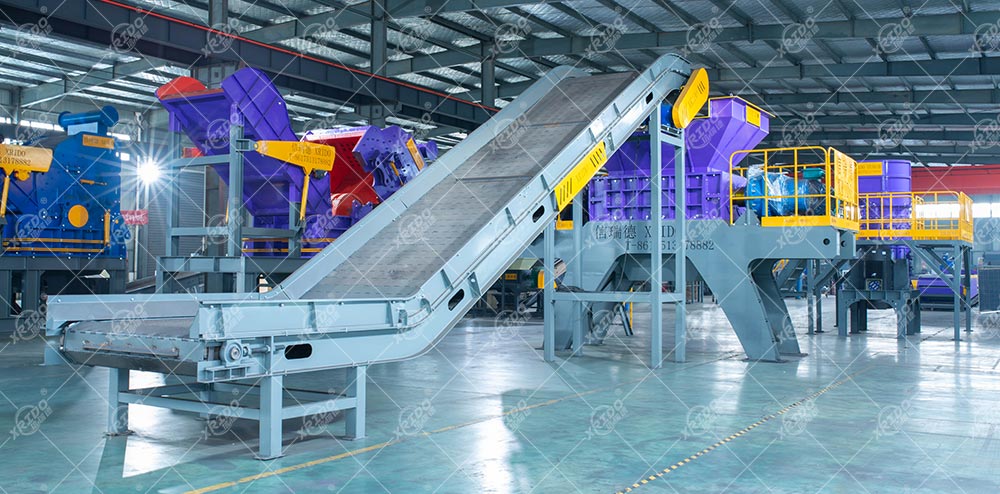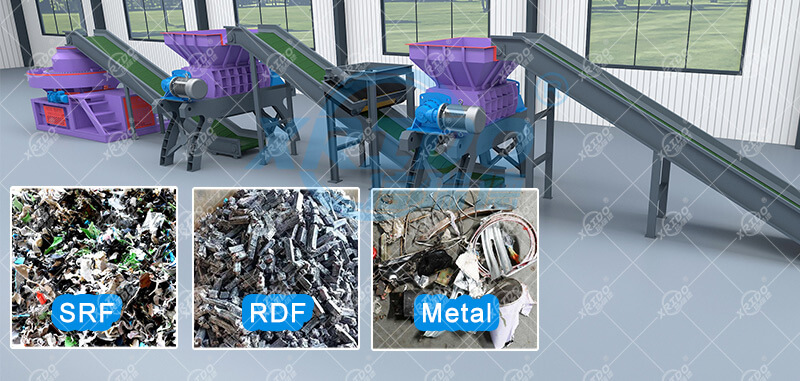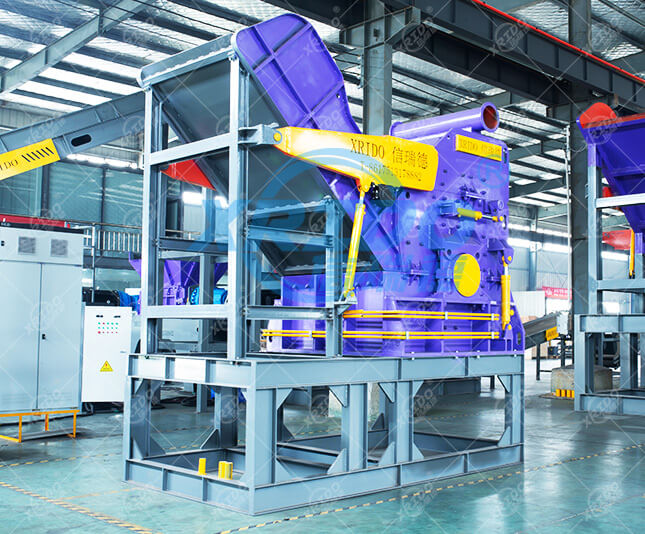Hot Products
Wooden Pallet Shredder
As a fundamental carrier in logistics and transportation, wooden pallets have a global annual consumption exceeding 2 billion units. Their main materials are hardwood such as pine and poplar (approximately 70%) and composite boards (30%). The structure includes a top panel, blocks, nails (metal fasteners), and a small amount of plastic anti-slip pads. Traditionally, discarded wooden pallets are difficult to reuse directly due to their large size (15-30kg per pallet) and the presence of metal impurities.

The wooden pallet shredder is a key piece of equipment in the resource recovery process, and its design must address the issues of large size and metal contamination:
• Shredding Principle: It uses a combined “shear and impact” shredding method. The shredding rollers are equipped with high-strength alloy blades (hardness HRC58-62), which, through high-speed rotation (200-300rpm), shred the entire pallet into coarse pieces of 30-80mm. Some models feature a “magnetic pretreatment module” with a permanent magnet drum at the feed inlet to remove metal nails/screws (separation efficiency >95%), preventing blade wear.

• Output Characteristics: The shredded material has an impurity rate of <3% (mainly residual plastic or fibers), with a uniform size suitable for subsequent sorting. The energy consumption is only 60% of traditional wood crushers (approximately 15-20kWh per ton).
SRF/RDF Process:
The shredded wood material (primarily clean wood with a small amount of non-wood fibers) is a high-quality raw material for producing Solid Recovered Fuel (SRF) or Refuse Derived Fuel (RDF) (calorific value approximately 16-19MJ/kg, close to lignite). The core process flow can be divided into four main stages: sorting and purification → fine crushing → drying and conditioning → molding/packaging:
1. Sorting and Purification
The coarse-crushed material is passed through a wind classifier to remove light impurities (such as residual plastic film and paper scraps), then through an eddy current separator (to remove any small metal components) and optionally through manual/optical sorting, resulting in a wood material with a purity of >98%. (For high-end SRF, further removal of urea-formaldehyde resin residue from plywood is required).

2. Fine Crushing
The purified material is fed into a twin-shaft shredder or hammer mill to reduce the particle size to 8-15mm (SRF standard) or 5-10mm (general RDF specification), ensuring complete combustion. The equipment in this stage must have a clog-prevention design (such as adjustable-speed rotors) to avoid fiber entanglement and maintain efficiency.
The wood pallet shredder, combined with the downstream SRF/RDF process, creates a complete chain from “large-volume wood waste” to “standardized high-calorific fuel,” solving the problem of waste disposal from logistics and packaging, and providing a clean alternative energy source for industry. This technology has significant potential for promotion under the “zero-waste city” and “dual carbon” targets.



